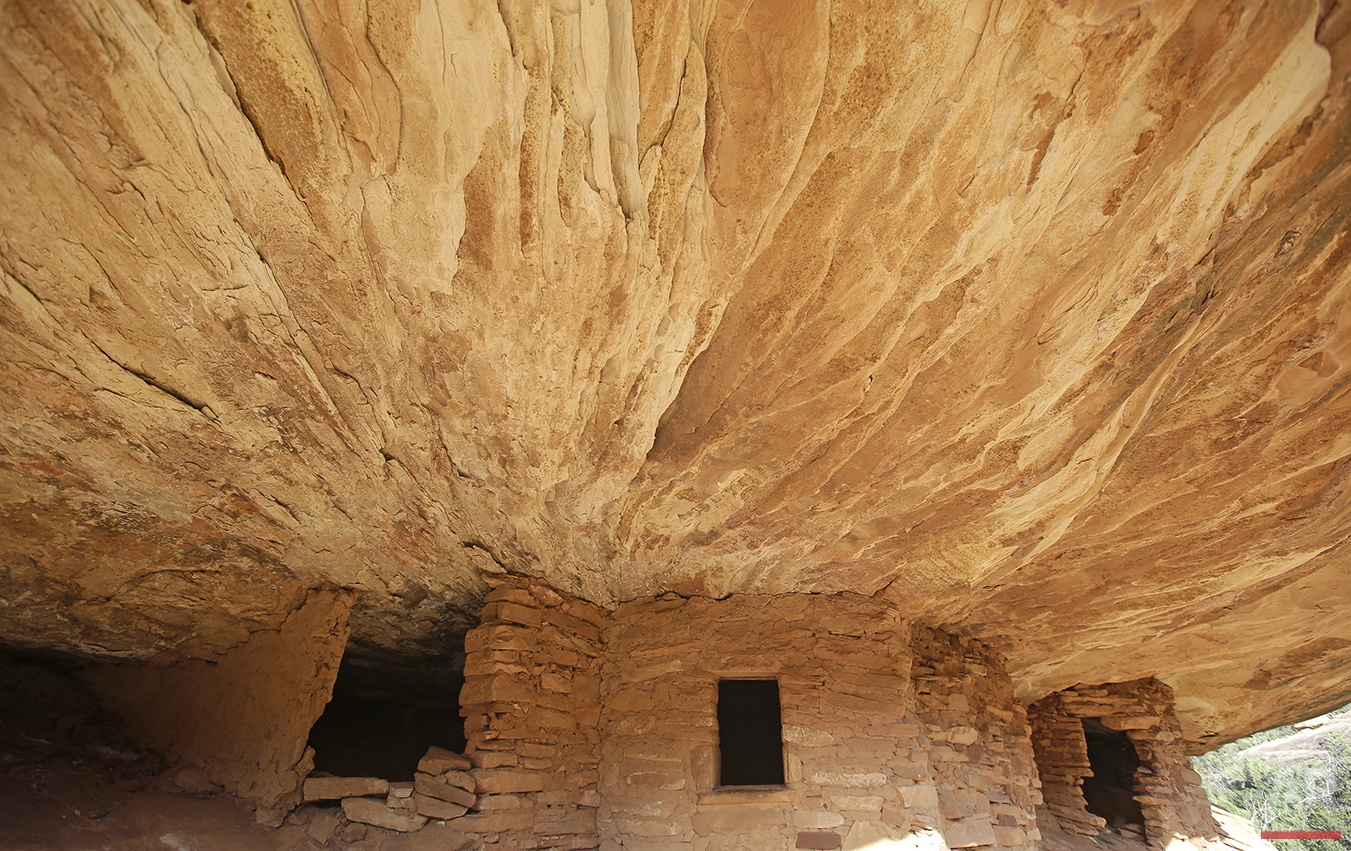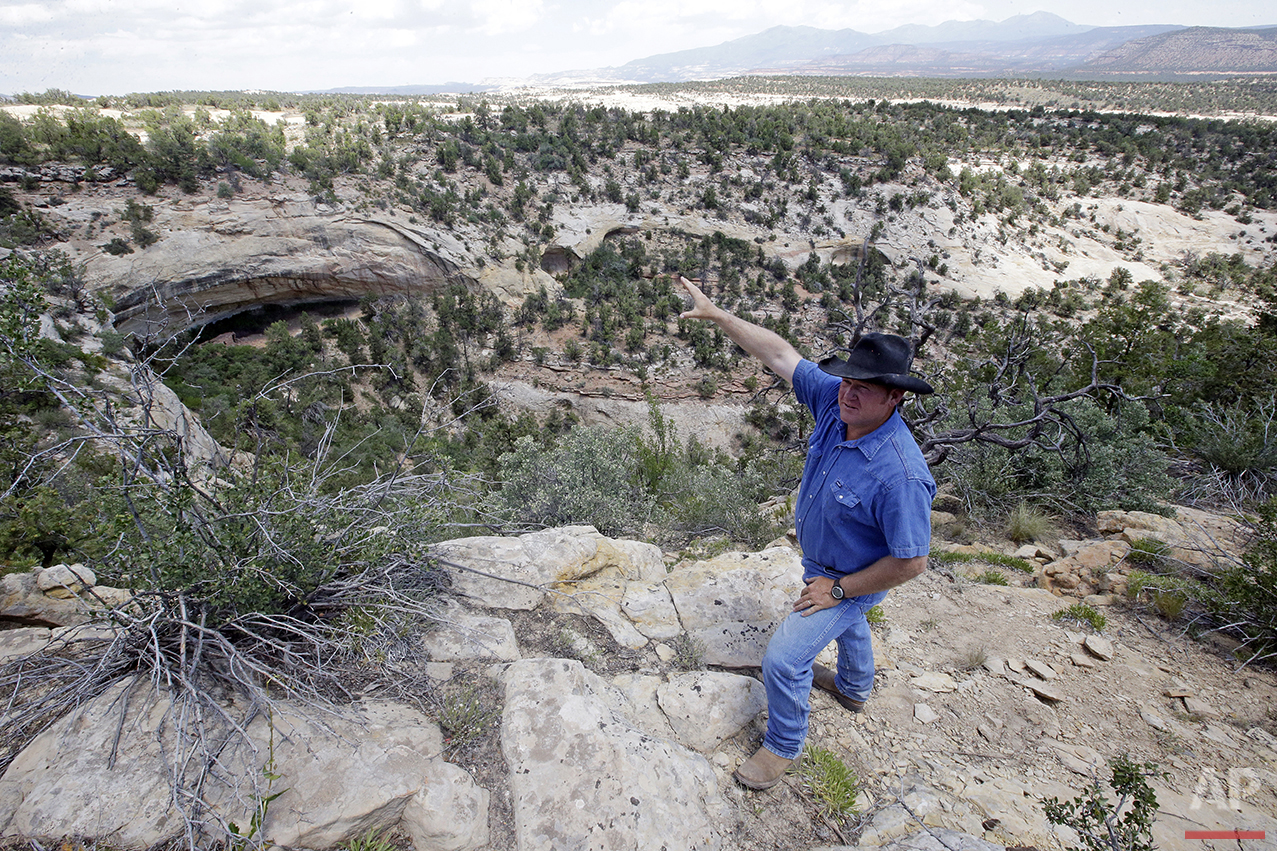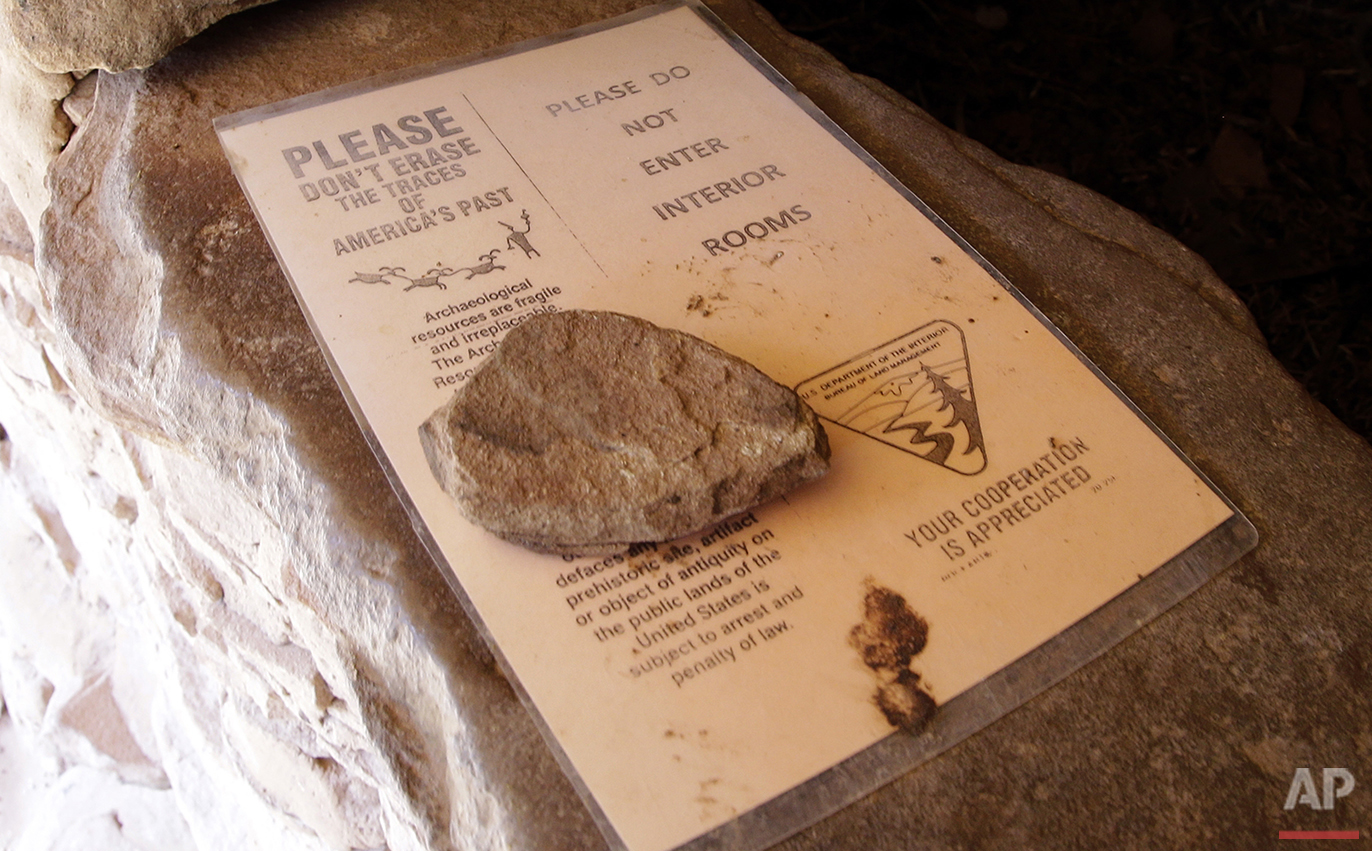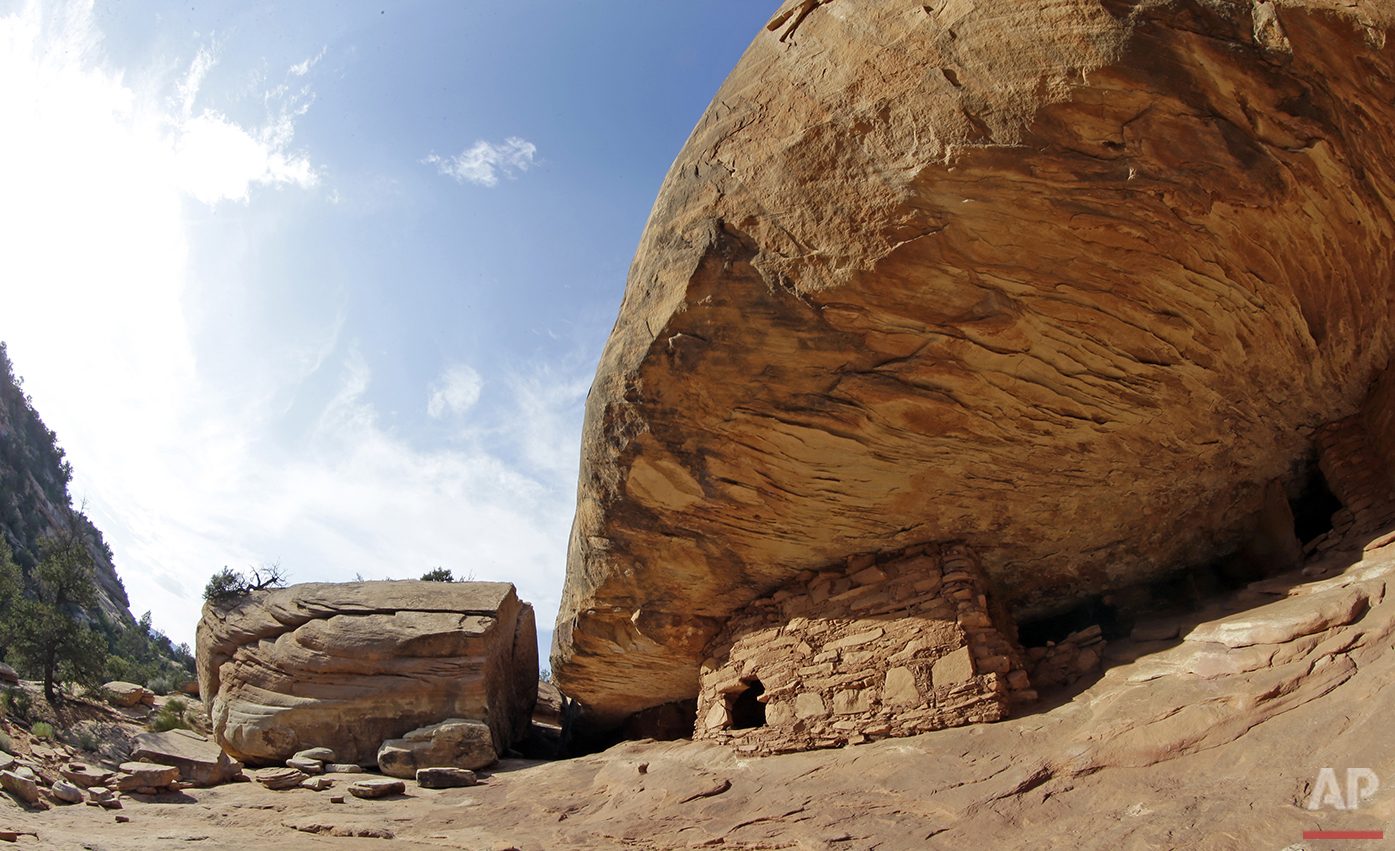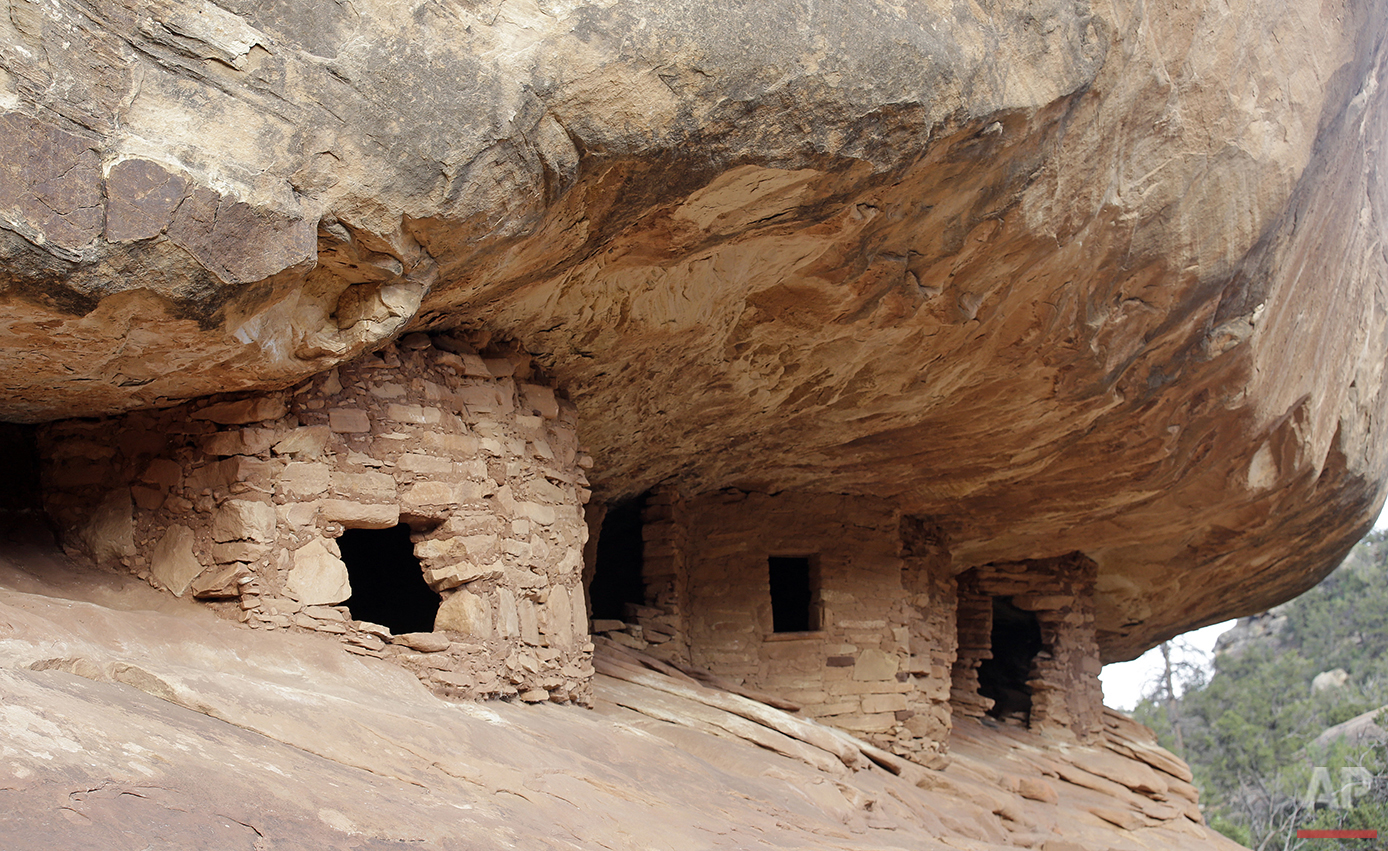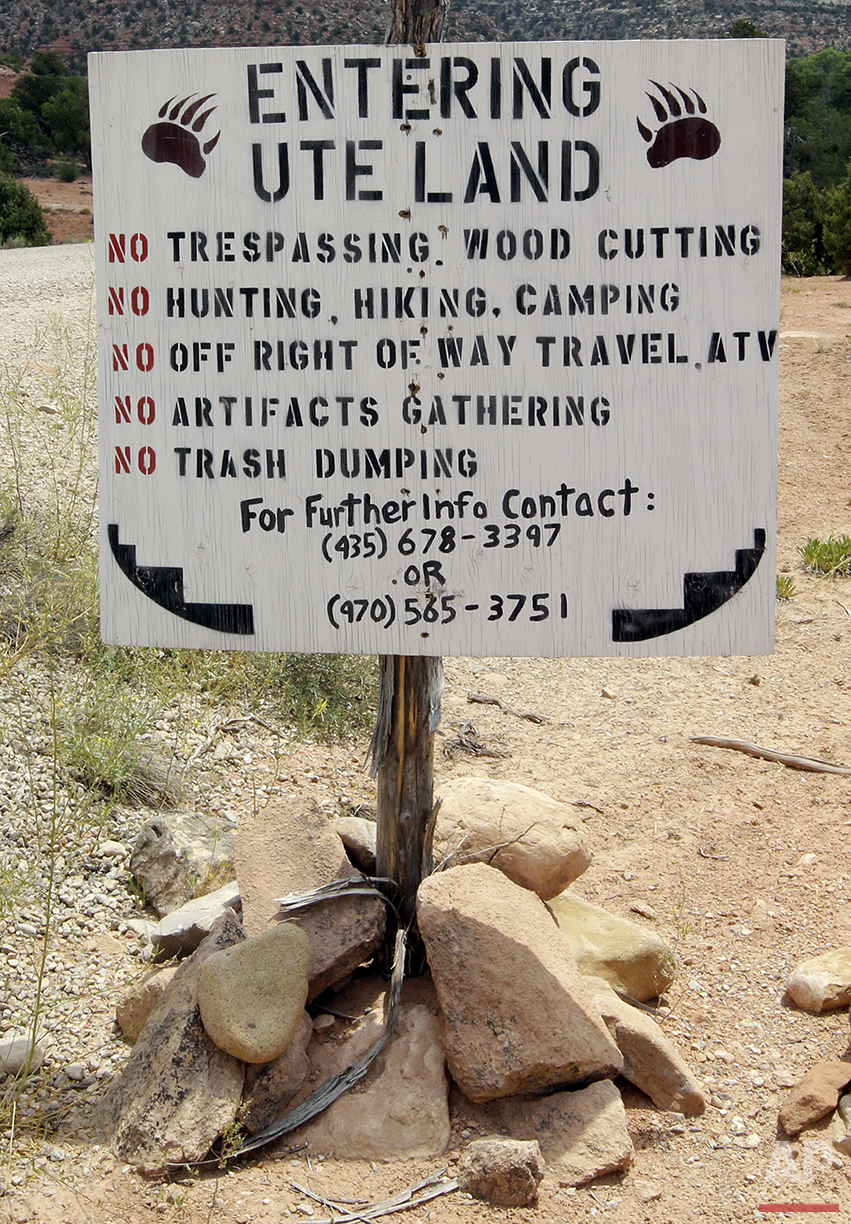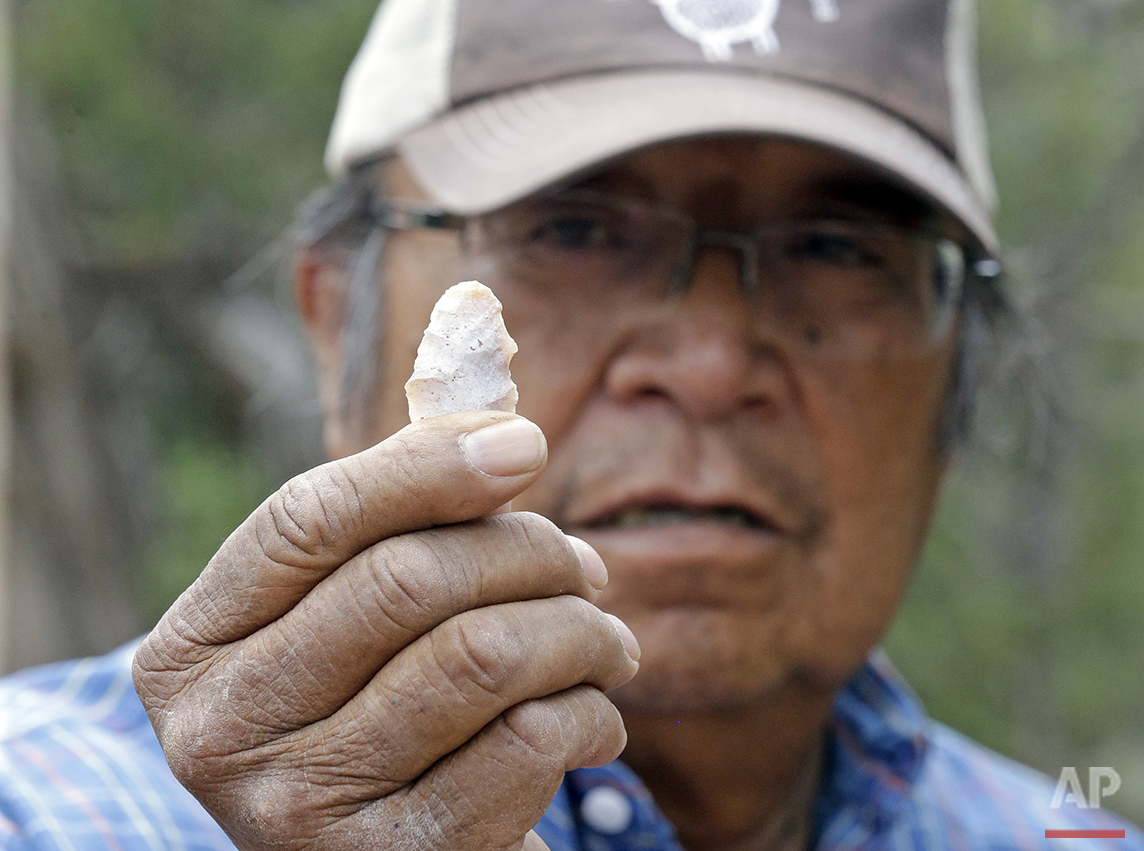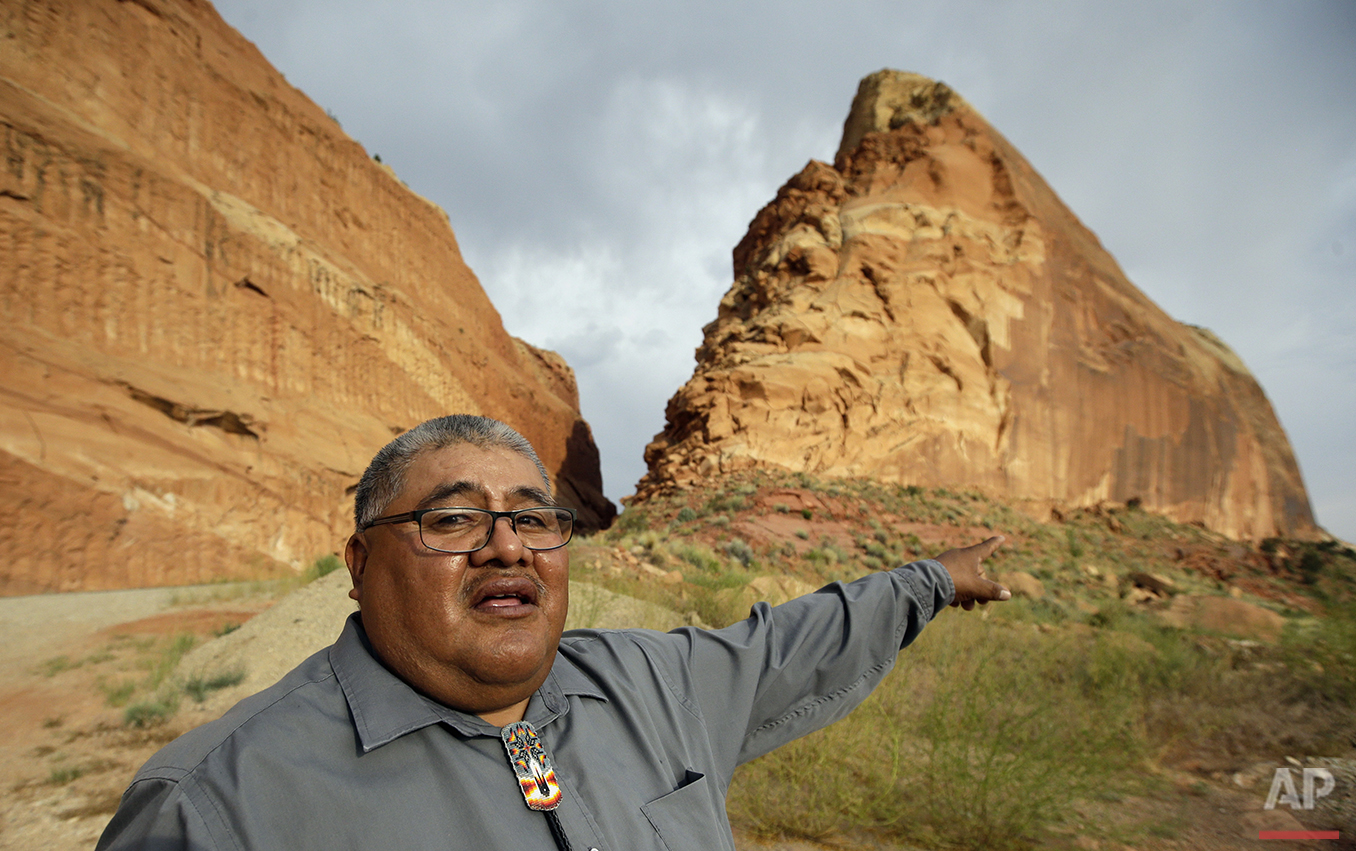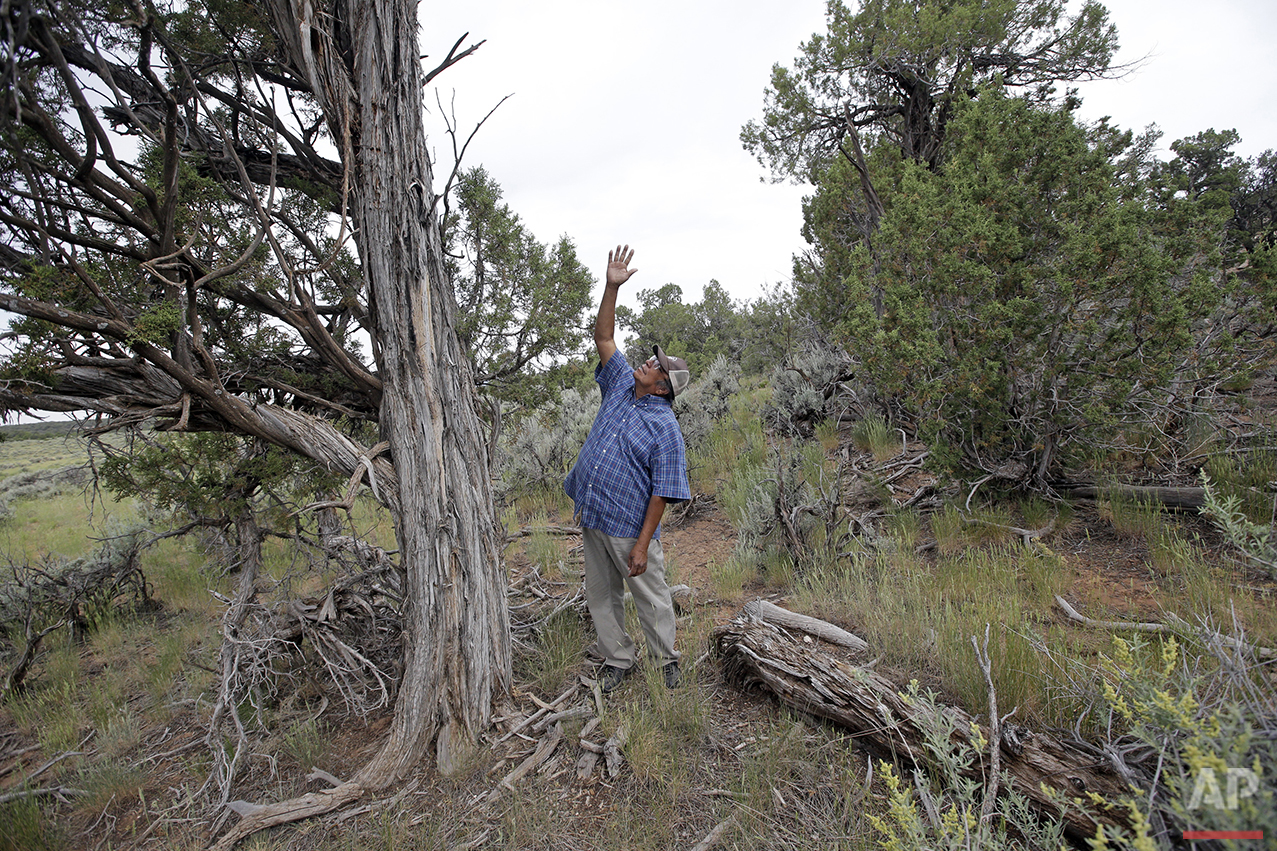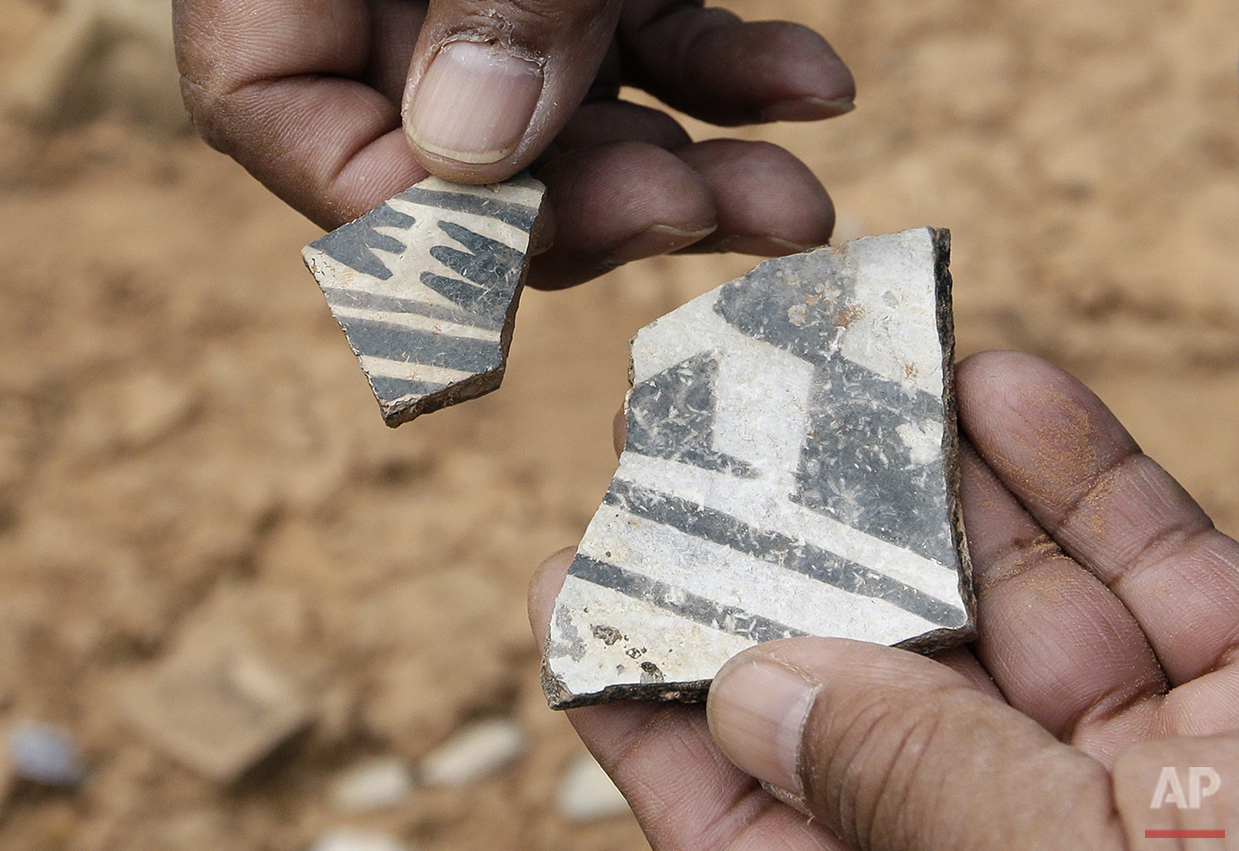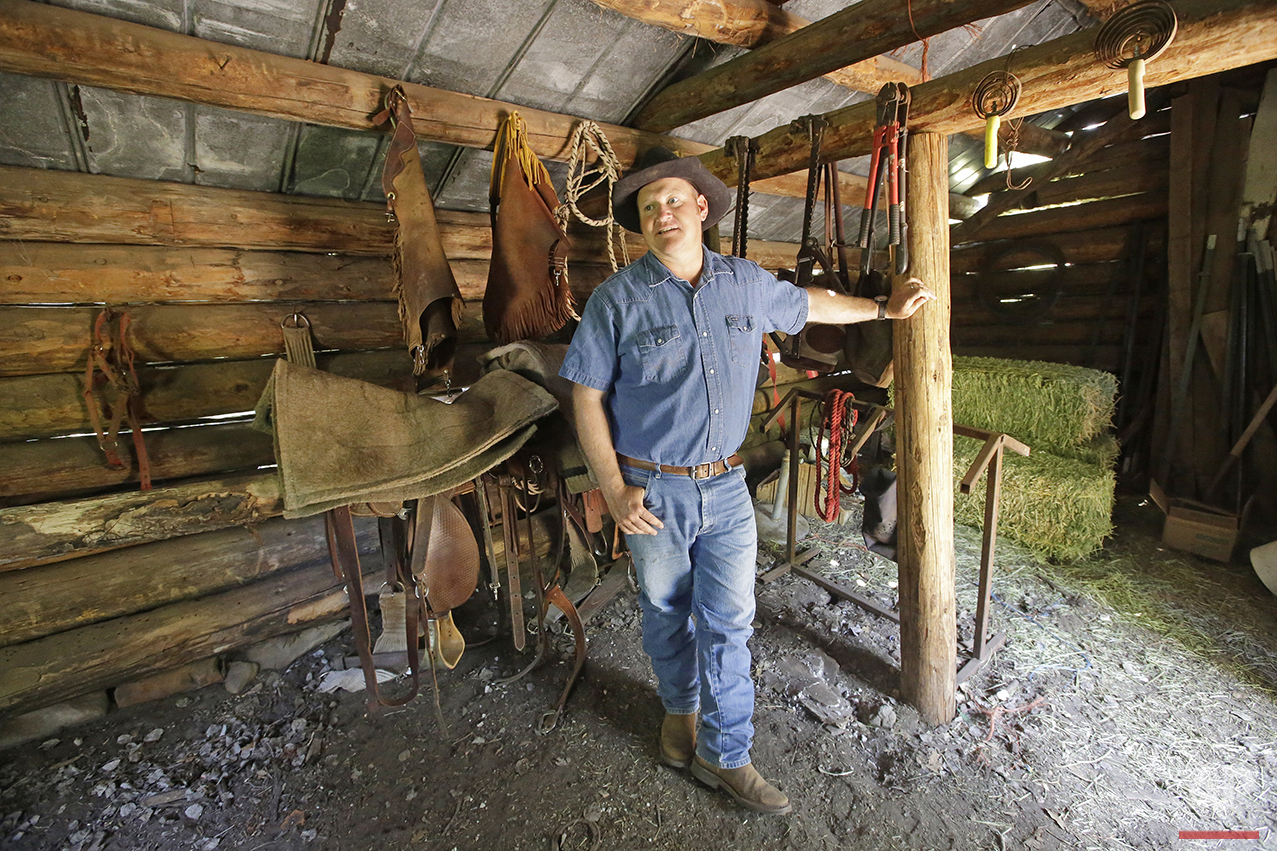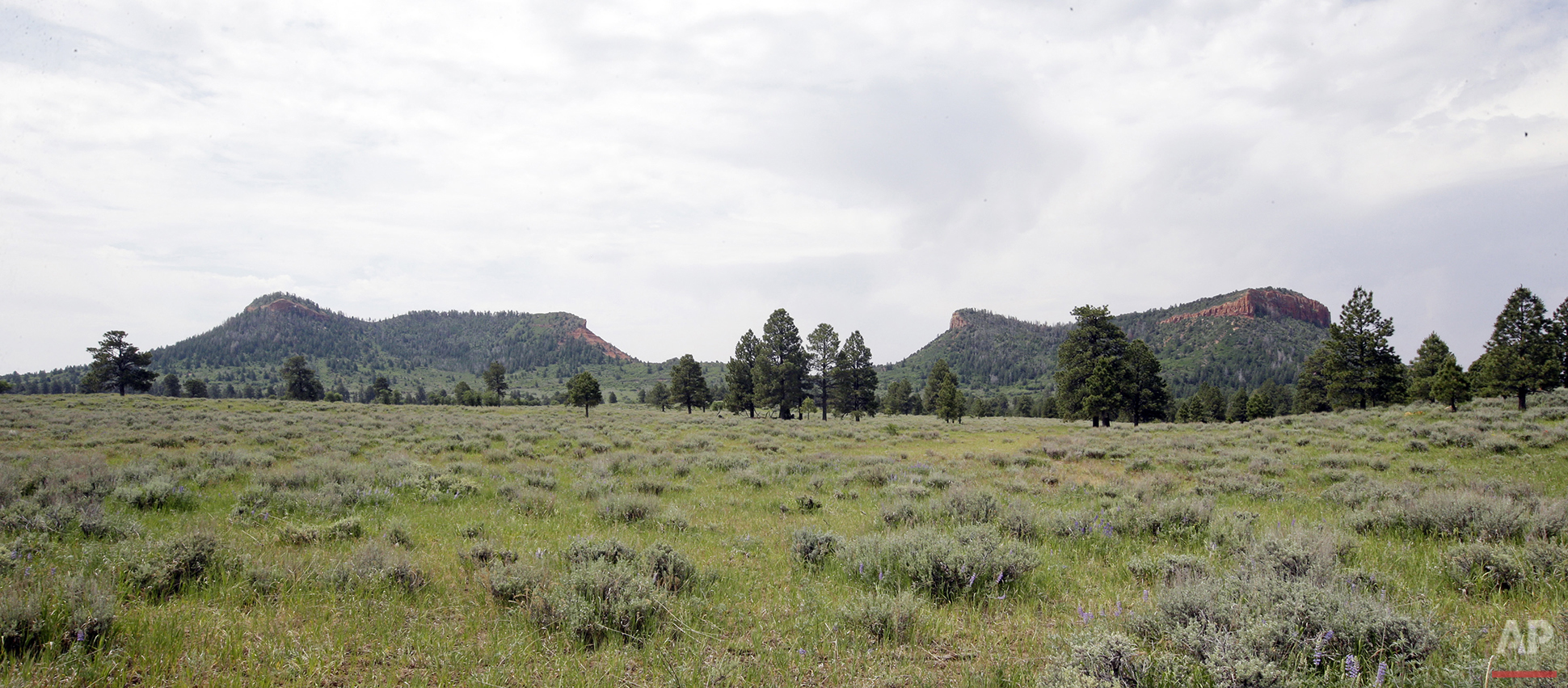Push to create Utah monument

Laminated sheets of papers held in place by rocks rest inside ancient cliff dwellings nestled underneath a spectacular red rock overhang in southeastern Utah.
"Don't erase the traces of America's past," the signs read. "Please do not enter interior rooms."
The weathered signs and a similar warning at the trailhead are the only protections in place for these easily accessible ruins along a canyon hiking path.
The cliff dwellings are part of an estimated 100,000 archaeological sites within a 1.9-million acre area that a coalition of American Indian tribes wants President Barack Obama to designate a national monument to ensure protections for lands considered sacred.
See these photos on APImages.com
U.S. Interior Secretary Sally Jewell is visiting the area this week to meet with proponents and opponents — the latest indication the Obama administration is giving serious consideration to the "Bears Ears" monument proposal.
The issue has become the latest battleground in the debate over public lands in the West.
Utah's Republican leaders, many rural residents and a few Native Americans fiercely oppose a proposal they believe would become another layer of unnecessary federal control and close the area for development and recreation.
To supporters, the makeshift Bureau of Land Management signs in the cliff dwellings illustrate the problem — vital remnants of tribal history aren't being properly protected from looting and vandalism.
"We don't want to forget about our ancestors," said Malcolm Lehi, a Ute Mountain Tribal commissioner. "Through them, we speak. That's the whole concept of protecting and healing this land. They are still here among us as the wind blows."
Tribal members visit the Bears Ears area — named for a set of rock formations — to perform ceremonies, collect herbs and wood for medicinal and spiritual purposes and do healing rituals, Lehi said.
Tucked between existing national parks and the Navajo Nation, the proposed monument features stunning vistas at every turn, with a mix of cliffs, plateaus, towering rock formations, rivers and canyons across wide expanses covered by sagebrush and juniper trees.
Opponents agree the area is a natural treasure worth preserving but fear a federal designation would create restrictions on oil and gas development as well residents' ability to camp, bike, hike and gather wood.
The management system in place from state and federal agencies works, said rancher Kenny Black, who has cattle grazing permits within the proposed monument.
"These areas are sacred to me because I've grown up here," said Black, a descendant of Mormon pioneers. "They're part of my history and my culture as well."
Members of Utah's all-GOP congressional delegation are urging Jewell to instead back a plan from U.S. Reps. Rob Bishop and Jason Chaffetz.
The bill introduced Thursday calls for protecting about 4.5 million acres in the state, including 1.4 million acres of the Bears Ears area, and to open up 1 million acres for recreation and oil and gas development. Another bill released Thursday would bar the president from declaring a monument in seven Utah counties, including the Bears Ears region.
Conservation groups say the Bishop and Chaffetz bill doesn't go far enough to protect the area. A tribal coalition stopped meeting with the congressmen because they felt their concerns weren't taken seriously.
Jewell's visit doesn't mean a monument decision is imminent, Interior spokeswoman Jessica Kershaw said.
But other such visits have foreshadowed designations. Obama designated the Stonewall National Monument gay rights site in June, a month after Jewell visited for a public meeting.
Presidents commonly name monuments in their final year in office. Obama has named 23 monuments during his two terms, said Athan Manuel, the Sierra Club's director of lands protection.
To residents in the small, predominantly Mormon town of Blanding, the proposal is a thinly veiled, repackaged push from environmental groups who recruited tribes after previous attempts at a national monument fizzled out.
The area "became conveniently sacred," said Black, echoing a common sentiment among residents.
Not all tribal members support the monument. San Juan County Commissioner Rebecca Benally, a Navajo, is a vocal critic, saying the designation would limit what Native Americans can do on their own ancestral lands.
Black and other opponents contend that reports of looting and grave robbery are grossly exaggerated.
"I think it's all made up," said Sharon Guymon, a restaurant owner in Blanding. "There are people who destroy things because they're trying to steal them, but that will happen if you make it a monument or not."
Since October 2011, the BLM has recorded 28 cases of archaeological damage within the agency's Cedar Mesa area that comprises a large chunk of the proposed monument, spokeswoman Kimberly Finch said. In one case this year, somebody etched a heart with initials on a wall with petroglyphs.
Jonah Yellowman, a Navajo spiritual adviser, regularly travels in the area to gather wood for his home and for rituals. Standing in a grassy field dotted with purple wildfires at the foot of the Bears Ears buttes, Yellowman reflected on the importance of the monument.
"Every monument has its purpose. This one has medicines here. This one has prayers, offerings, something that is very spiritual to us," Yellowman said. "We'd like to keep it that way."
Text from the AP news story, Push to create Utah monument marks latest Western land fight by Brady McCombs.
Follow AP photographers on Twitter: http://twitter.com/AP/lists/ap-photographers
Spotlight is the blog of AP Images, the world’s largest collection of historical and contemporary photos. AP Images provides instant access to AP’s iconic photos and adds new content every minute of every day from every corner of the world, making it an essential source of photos and graphics for professional image buyers and commercial customers. Whether your needs are for editorial, commercial, or personal use, AP Images has the content and the expert sales team to fulfill your image requirements. Visit apimages.com to learn more.
Written content on this site is not created by the editorial department of AP, unless otherwise noted.
AP Images on Twitter | AP Images on Facebook | AP Images on Instagram

